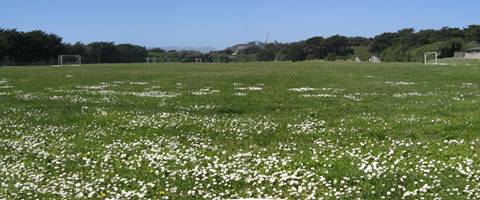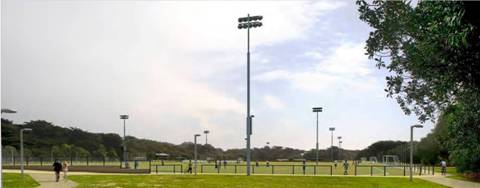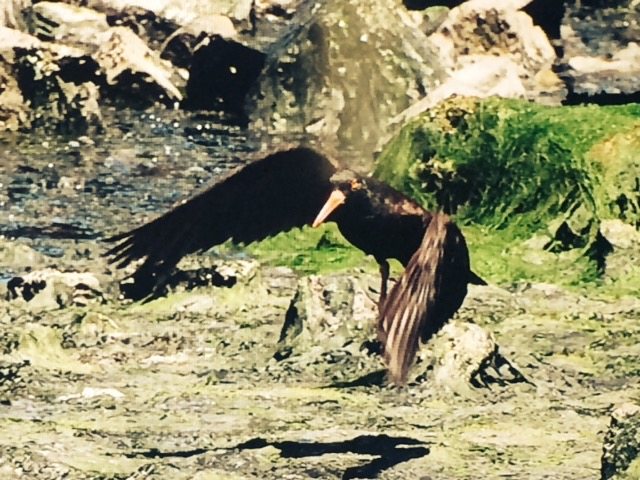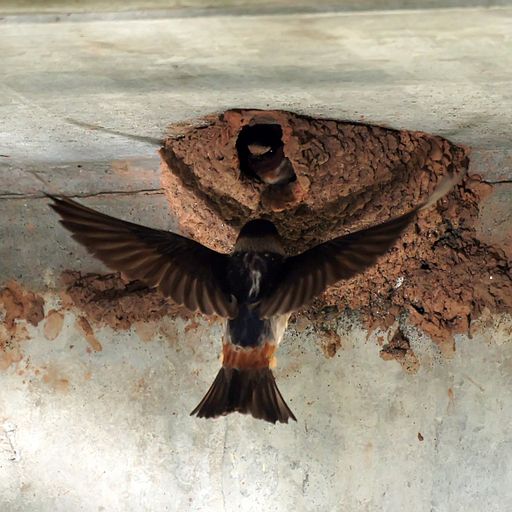Beach Chalet goes to the Coastal Commission
By Ilana DeBare
For the past two years, we’ve been fighting plans by the city of San Francisco to create artificial-turf soccer fields with stadium-style lighting in western Golden Gate Park, an area that was intended in city plans to remain more natural and less developed.
We lost a round in this battle last summer before the city’s planning and parks commissions.
But next week, the issue goes before a different body — the California Coastal Commission.
And there are (fingers crossed!) some signs of hope.
The Coastal Commission staff report, which was released last Friday, concludes that the Beach Chalet soccer field project may conflict with the city’s Local Coastal Plan.
The “project will modify the Beach Chalet fields in a way that will alter its naturalistic character, including through the introduction of elements that would significantly change its spatial organization and setting (e.g. artificial turf, field lights, seating areas, fencing, concrete paths, etc.),” the commission staff wrote.
The report recommends modifying the project along the lines suggested by GGBA and our allies — improving the grass fields, rather than replacing them with artificial turf, and eliminating or reducing the proposed 60-foot-tall lighting towers.
The staff report noted that:
Such a project would be a significant improvement to the Beach Chalet fields area that would both enhance its pastoral naturalistic character and its utility for recreation consistent with the LCP [Local Coastal Plan].
So that’s good news! But the commission is by no means required to follow the recommendation of staff. And the same powerful interests that pushed the city for an artificial turf “solution” will also be trying to influence the Coastal Commission.
Together with our allies in S.F. Ocean’s Edge, we’re asking people to come to the hearing on May 9th, to support an alternative that would meet the needs of both recreation and wildlife.
 Beach Chalet now, with natural grass fields
Beach Chalet now, with natural grass fields
 What Beach Chalet would look like with lights
What Beach Chalet would look like with lights
If you can’t attend the hearing, you can send the commission a letter. But it would need to be a postal letter (no email!), and they would need to receive it by May 3rd. Click here for information on what to say and where to send a letter.
Email us at ggas@goldengatebirdalliance.orgif you can attend the hearing. If enough people are coming, we can try to arrange carpools. The hearing will be at the Marin Board of Supervisors chamber, 3501 Civic Center Drive in San Rafael. …





















